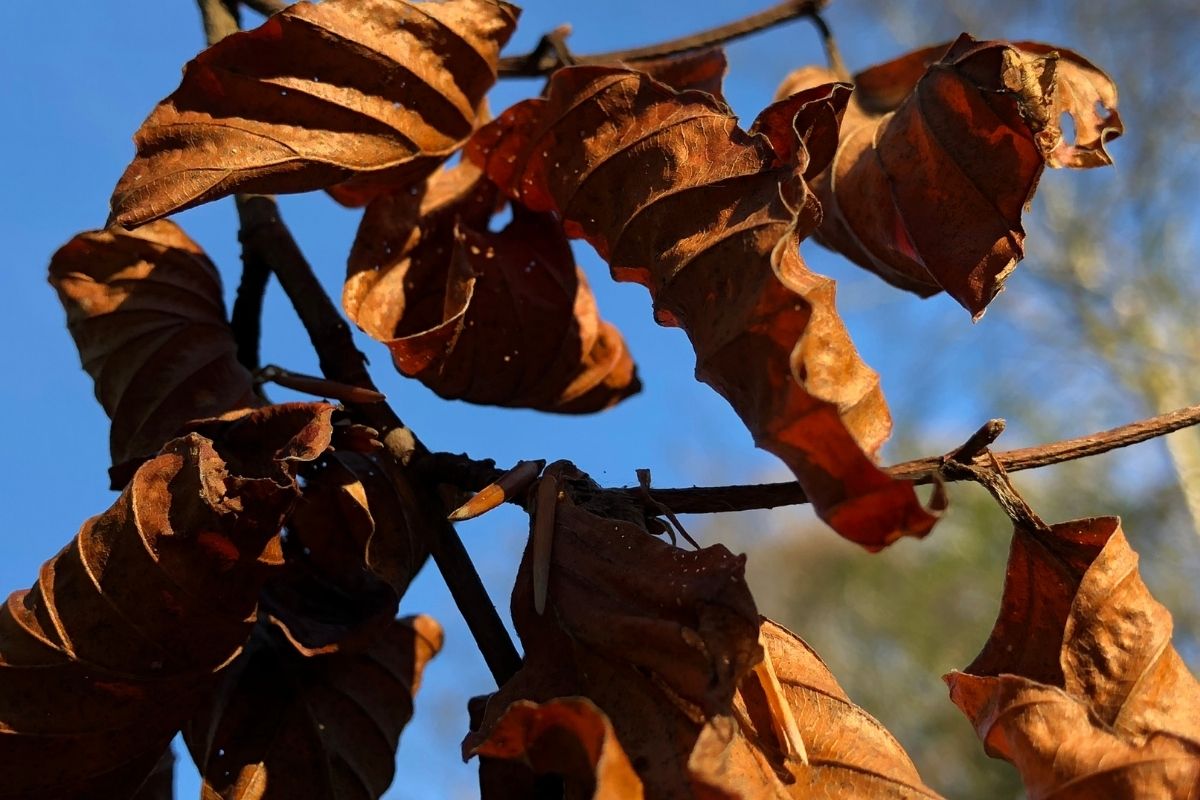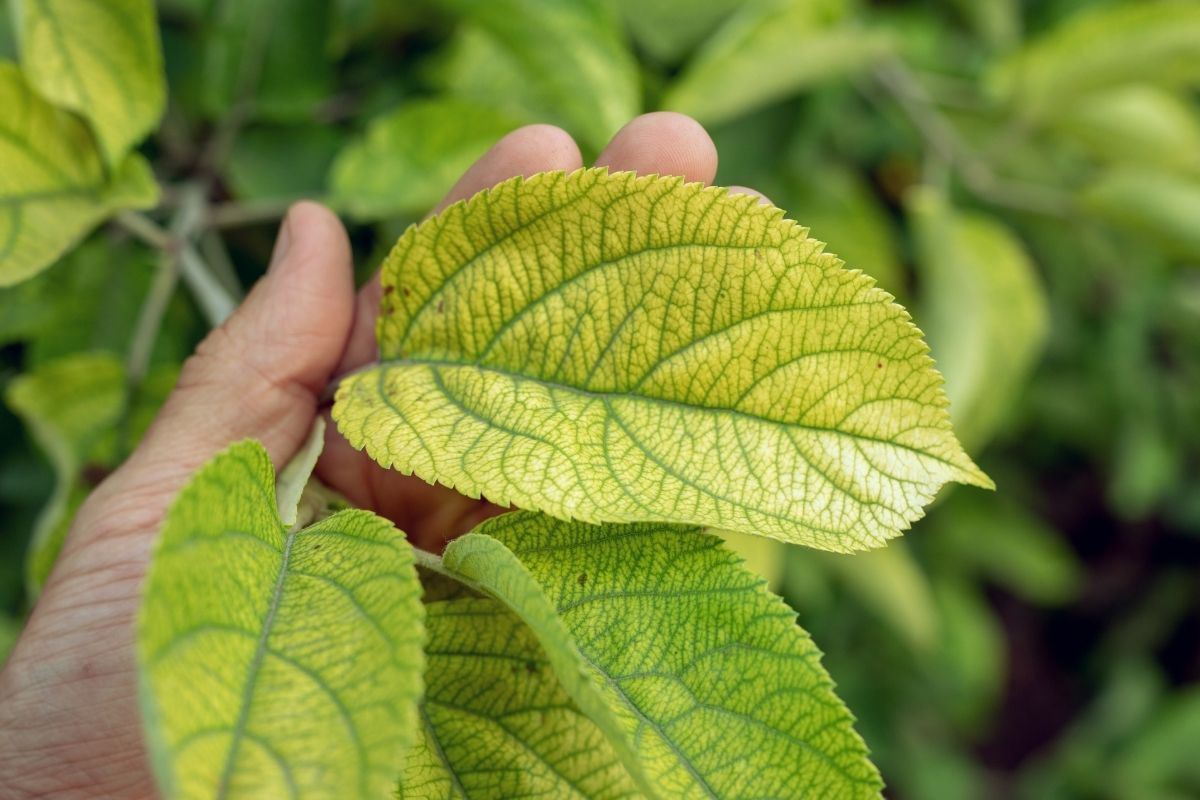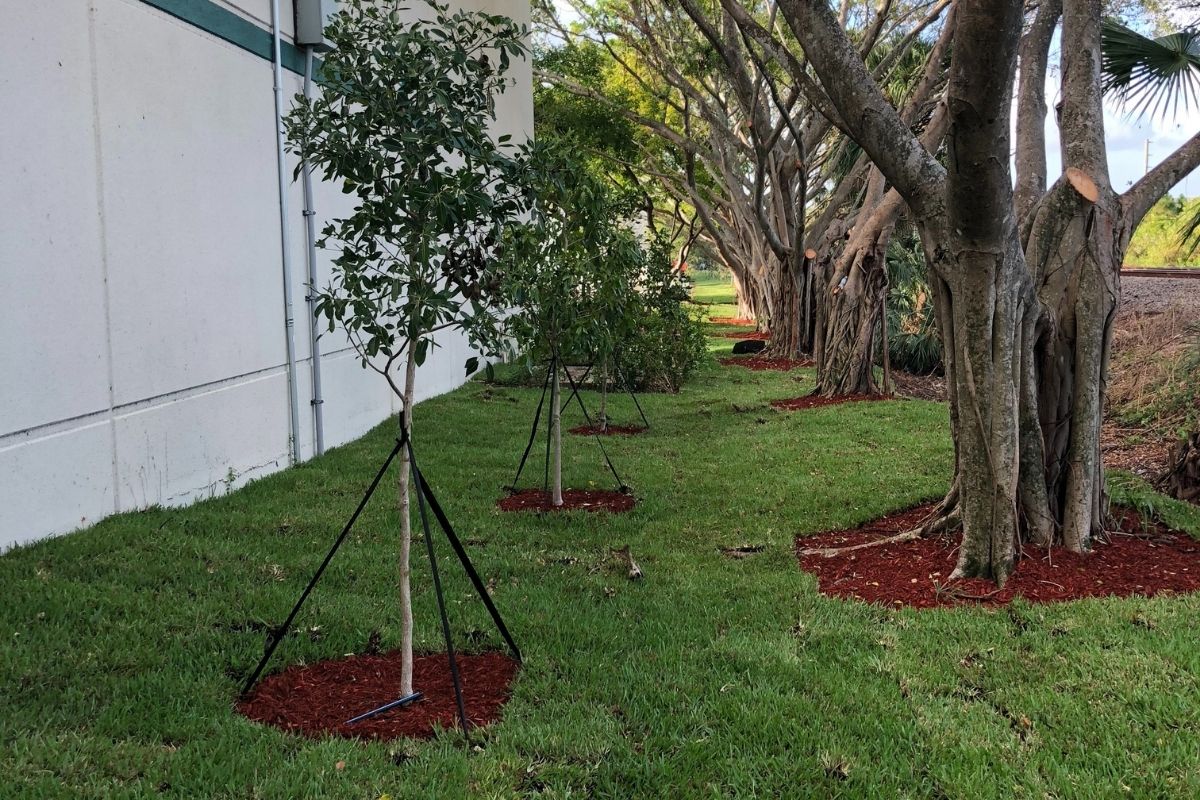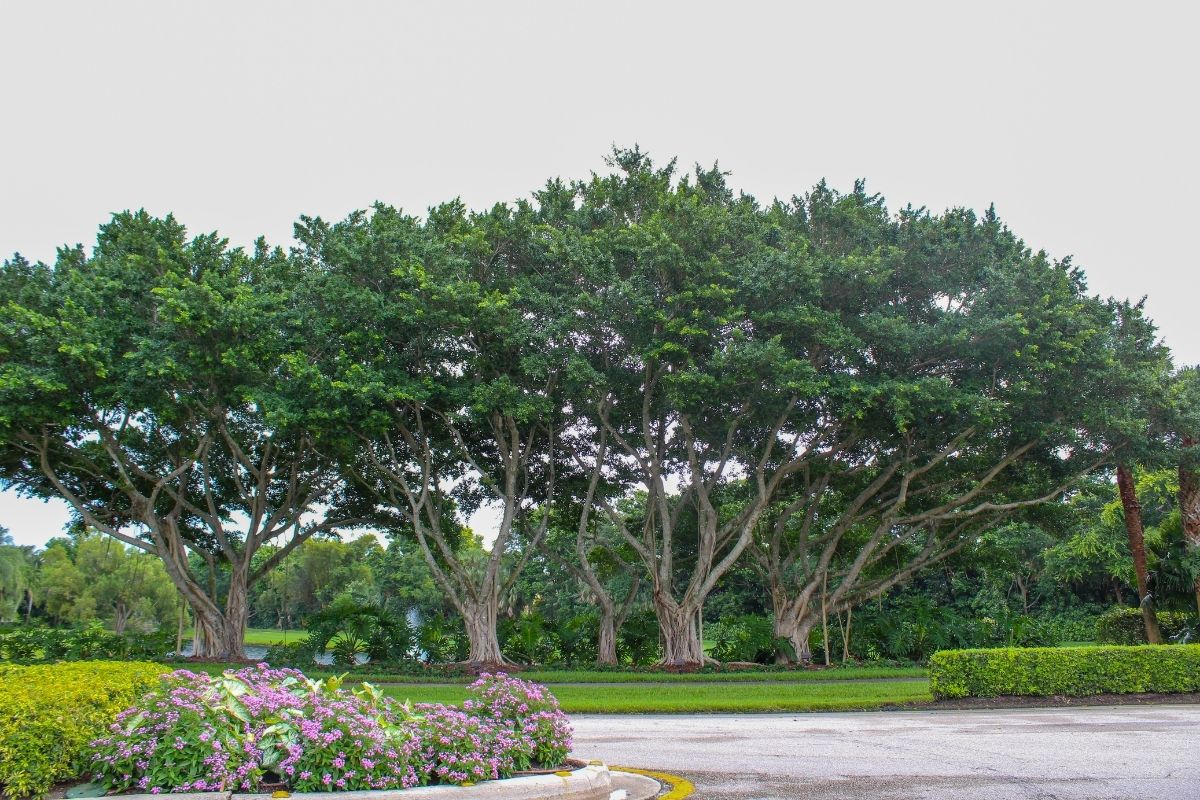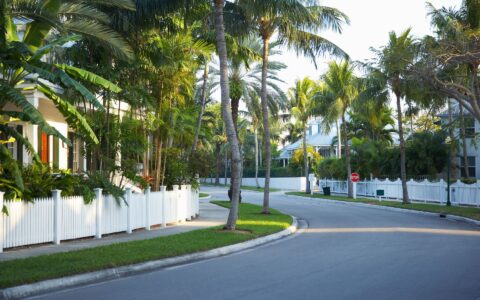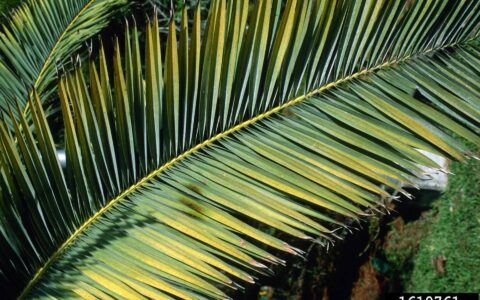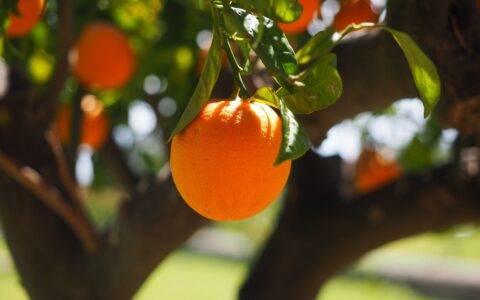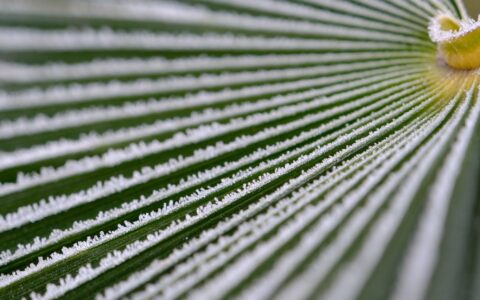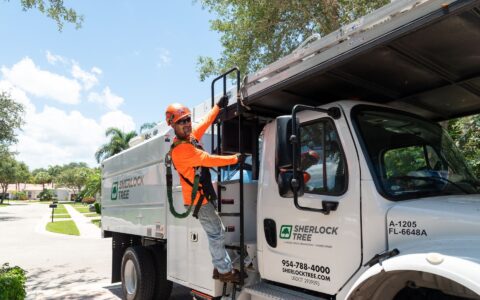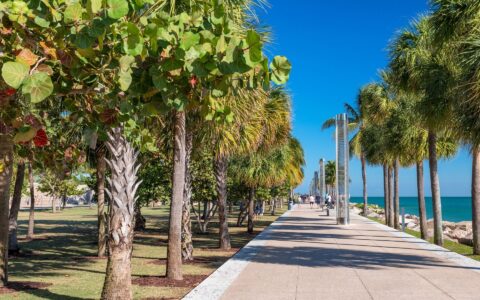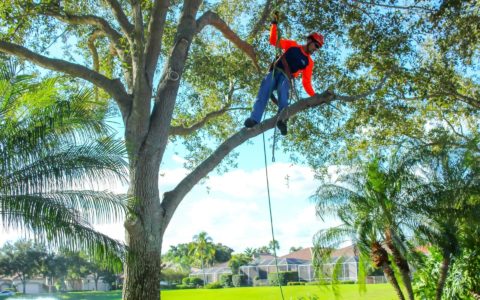Properly watering your plants and trees can be a challenge in South Florida. Although we have a rainy season from May to October (with an average rainfall of 43 inches), we also have a dry season from November to April with an average of only 14 inches of rain. We also have mostly sandy soil that doesn’t retain much moisture and winds that further dry out the soil in winter. Add to that the watering restrictions in most South Florida neighborhoods, and you have a recipe for watering disaster.
Most often, we see trees dying from underwatering. But, surprisingly, many also die from being overwatered. Unfortunately, it’s not always easy to know whether it is an overwatered or underwatered tree; many of the symptoms are the same.
In this article, you’ll learn:
- the symptoms of overwatering and underwatering, including how they differ,
- how to tell whether your trees, palms, and landscape plants are getting enough, or too much, water, and
- how to ensure you’re giving your palms, trees, shrubs, and ornamentals just the right amount of water.
Symptoms of Overwatered vs Underwatered Trees
You might be surprised to see in the chart below that the symptoms of over-and underwatered tree are very similar. However, there are some differences in how and when these symptoms appear, depending on whether they’re due to too much or too little moisture. Keep reading for all the details!
|
Sign / Symptom |
Overwatering |
Underwatering |
|
Wilted Leaves |
X |
|
|
Curling Leaves |
X |
X |
|
Yellowing Leaves |
X |
X |
|
Untimely fall color |
X | |
| Early leaf drop |
X |
|
|
Consistently wet ground |
X | |
| New growth withers | X |
X |
|
New growth turns light green or yellow |
X | X |
|
Fragile leaves |
X | X |
| Leaves break easily | X |
X |
| Sparse canopy |
X |
Signs of Overwatered Trees
It is important to realize that while the signs of overwatering your trees versus underwatering are similar, they require two entirely different responses. It’s also good to know that it isn’t always the tree owner’s fault. For example, floods can “drown” trees, as can massive rainstorms that leave standing water and waterlogged soil. But, in most cases, overwatered trees are usually damaged or killed by improper watering or irrigation system problems.
To help you better recognize the signs of overwatering, let’s break down the symptoms highlighted in the table above.
Curling Leaves
Curling leaves occur from overwatering because excess moisture has caused the roots to rot. The leaves begin to curl upward as they get less nutrition from the dead and dying roots. Curling leaves means the overwatering problem has progressed significantly, but you may still be able to save the tree with prompt and proper care.
Yellowing Leaves
Overwatering fills the air spaces in soil, depriving plant roots of oxygen. Put simply, you are suffocating your plant. You’ll quickly start to see leaves turning yellow throughout the canopy of the tree or shrub. Yellowing leaves typically precede curling leaves so take it as a warning sign!
Consistently Wet Ground
The ground around your tree will be one of your best overwatering indicators. Only hydrophytic plants enjoy being consistently flooded. Otherwise, the ground around your tree should never remain spongy after you’ve watered and there should be no signs of standing water.
New Growth Withers or Changes Color
New growth is the most vulnerable part of any plant. If your tree’s new growth withers away or changes color, evaluate your watering regime immediately.
Fragile Leaves
Leaves can become fragile when the tree is consistently overwatered, usually because the roots have rotted. It may seem counter-intuitive, but at this point, the leaves aren’t getting enough water since so many roots have died.
Signs of Underwatered Trees
An underwatered tree looks similar in many ways to an overwatered tree. However, the ways that it impacts the tree are quite different. The tree’s leaves are often the best indicator for assessing tree health. Here is what each of the symptoms may indicate.
Yellowing, Curling, and Wilted Leaves
Yellowing and wilted leaves can be an indicator of underwatering your tree. When the leaves don’t get enough water to maintain photosynthesis, they start to break down. The process often begins with leaves that yellow around the edges or become spotty. If the problem continues, the leaves will curl at the edges. Eventually, underwatering leads to entirely wilted or dead leaves.
Note that once leaves have begun this process, they won’t ever make a full recovery. For example, if your tree has been underwatered for long enough to make the leaves turn yellow, you won’t be able to save those leaves.
Untimely Fall Color and Early Leaf Drop
Deciduous trees usually drop their leaves and become dormant as fall turns into winter. But, in many tree species, long periods of drought will also act as a trigger to drop their leaves and enter dormancy. Summer dormancy can also happen in landscape or potted trees that aren’t regularly or properly irrigated. This often results in your tree’s leaves changing color and falling much earlier than they normally would.
New Growth Withering or Changing Color
One of the earliest signs of an underwatered tree is the appearance of the new growth. Just as it is sensitive to overwatering, new growth is the most vulnerable to underwatering. If your new growth withers, you still have enough time to correct watering mistakes before the mature leaves suffer.
Sparse Canopy
If your tree consistently gets inadequate water, it will have a thin canopy with fewer new branches and less leaves than usual. For example, a sparse canopy might begin in spring if the tree doesn’t get enough water to come out of winter dormancy completely. It can also happen during the growing season if your tree begins to drop leaves because of underwatering.
Symptoms of Severe Underwatering
If water stress becomes too severe, your plants and trees can’t recover. This is referred to as the wilting point or permanent wilting point and happens when there is little or no water available for roots to take up. At the permanent wilting point, leaf and branch cells become so damaged that they die. After that point, watering does no good.
How to Check if Your Tree Needs Water
There are two ways to check how much moisture is in the soil around your trees: the “finger check” and using a moisture meter.
Assessing Soil Moisture
You’ll need to be willing to get a little dirty for this one. Check for soil moisture in a few spots around the root zone of your tree (not right up against the trunk). Start by digging 3 to 4 inches into the soil (you can often use your finger to get deep enough into the soil).
If you feel moisture, hold off for a couple of days. If it feels quite wet, leave it alone longer. Check it consistently over the next week to figure out when to water.
If the soil is dry at about 4 inches below the surface, then it’s time to water your tree.
Another way to do this is to use a shovel to dig down about 6 to 8 inches. Reach into the soil and feel it in your hands. If it blows away, it’s too dry and the tree should be watered. If you can squeeze out water, it’s too wet and doesn’t need to be watered at that time. You want soil that holds its shape but isn’t too mushy and doesn’t turn dusty and blow away.
Using a Moisture Meter
A tree’s feeder roots are mostly found in the top 18 inches of the surrounding soil. So, to properly assess whether they’re getting enough water, you’ll need a moisture meter with a probe that can get down to the root zone (24” is a good length).
The readout on the meter will tell you whether the soil moisture is low, moderate, or high. Only irrigate when the soil is dry or on the low end of moderate, depending on your tree’s needs.
PRO TIP – If you have grass around the tree, you’ll need to water more often. Turfgrass roots absorb much of the water from overhead irrigation before it can soak deeper into the soil where the tree’s roots are found.
Also, any water that runs off or doesn’t soak into the soil doesn’t count. If you have a tree growing on a slope, you might want to create a basin around the tree (with a ridge of soil on the downslope side of the basin) so more of the water soaks into the ground around the tree.
Proper Tree Watering Practices
There is a bit of a science when it comes to watering trees. First, it is essential to understand that each tree species is different. And each individual tree can have different watering needs based on its age, health, and placement, even within the same species.
Keep in mind that many neighborhoods and communities have strict water restrictions. If you live in one of these areas, adjust your watering schedule accordingly. It might also mean having fewer trees on your property or selecting drought-tolerant species.
- Water correctly. Trees and palms need long, slow watering, and less-frequent watering than shrubs, perennials, and turf.
- Don’t water near the trunk. Instead, concentrate water around the root zone and the area just beyond it. This will encourage the roots to reach outwards.
- Check soil moisture before watering. Between waterings, the ground around your tree (under the layer of mulch) should be moist, but not soaking wet.
- Keep an eye on the weather. If it’s exceptionally hot, you may need to water more often and/or provide more water. If it’s a rainy week, shut off any irrigation systems – you don’t want to drown your trees! This is easiest if your irrigation system has a rain gauge that will automatically shut off the system if there’s been rain. Snowbirds who aren’t here year-round will especially appreciate this!
- Even Florida-friendly or xeriscape plants, shrubs, and trees need water; just because they’re drought-tolerant doesn’t mean they should never be watered!
- Water in the morning. Irrigating at night can promote fungal problems while irrigating during the day leads to water loss from evaporation.
- Adjust your irrigation as the seasons change.
- Treat mulch like it’s your tree’s best friend. Placing organic mulch around your trees helps keep the moisture in the soil so that more is available for the tree to use. It also stops plants from growing around the tree and competing for water and nutrients.
- Know how much water your trees need. For example, the common crape myrtle has much lower water needs than a palm or red maple. For details on the watering needs of specific trees in South Florida, check out this resource on waterwise trees from the South Florida Water Management District.
- Newly planted trees need additional care for at least the first two years after planting. This involves more frequent watering and careful monitoring to ensure it can develop a strong root system. In areas with water restrictions, you may need to water by hand. See this resource from the University of Florida for more details on watering new trees.
Make Sure Your Trees Are Properly Watered
Are you struggling to manage your tree’s watering plan? Get the help of a certified arborist local to South Florida! The tree health experts at Sherlock Tree Company can evaluate the overall health of your trees, determine whether they’ve been over-or underwatered, and recommend ways to help them recover from any watering problems. We can also help you set up a watering regime that will keep your trees, palms, and shrubs healthy and thriving no matter the amount of precipitation.
Give us a call today at 954-788-4000 or request an appointment using our handy online form.
FREE RESOURCE – If you live in Miami-Dade County, check with the Miami-Dade County Extension. They have an irrigation conservation program called the Urban Conservation Unit (U.C.U) for homeowners and large properties. This program provides free irrigation assessments, and participants can receive rebates for retrofitting their irrigation systems to improve water efficiency.
Call Sherlock for quality tree services
Whether you're looking for specific tree care services, such as palm trimming, tree removal, or disease treatments, or would like one of our Arborists to examine your trees to identify any issues and recommend options, we're always here for you! Just give us a call at 954-788-4000 to set up an appointment.
- « Previous
- 1
- 2
- 3
- Next »
SEE MORE ARTICLES
Looking for more?
We've got you covered with a monthly newsletter full of tips, resources, updates, how-to's, and other helpful information about trees and landscapes in South Florida!

